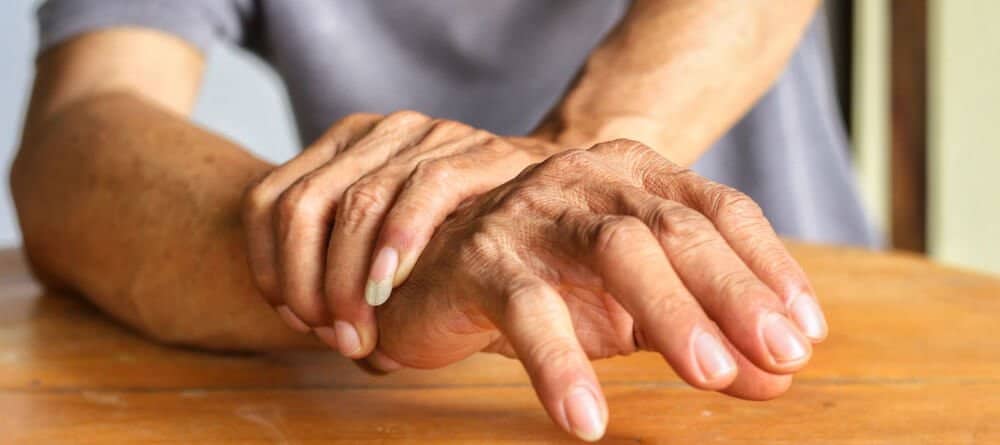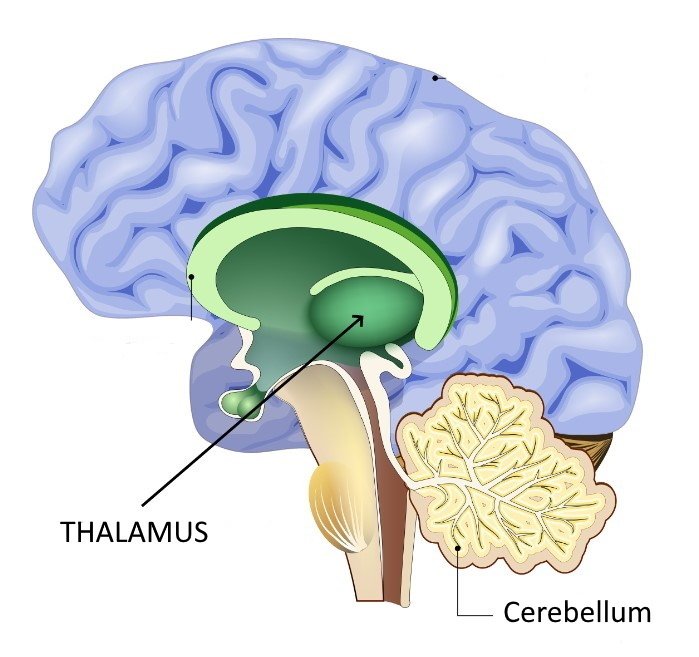Essential Tremors & Shaking Treated with Craniosacral Therapy in New York City
Essential Tremors & Shaking is not Parkinson's Disease
What Causes Essential Tremors & Shaking
Treating Essential Tremor & Shaking
It's estimated that 1 in 25 adults over the age of 40 in the U.S. suffer from the neurological movement condition called, 'Essential Tremors'. A tremor is a rhythmic back and forth movement or uncontrollable shaking in one or more parts of your body, most often in your hands but can also occur in your torso, legs, arms, head, and vocal cords. The rhythmic pattern of shaking is caused by unintentional (involuntary) muscle contractions driven by a disruption in the normal functioning of certain parts of the brain.

Essential Tremors and Uncontrollable Shaking is generally mild but can progressively become debilitating and disrupt a person's ability to engage in their daily routines (bathing, dressing, writing, eating, etc). The defining characteristic of essential tremors is that the shaking typically occurs while you are doing something and or amidst a purposeful movement, such as when drinking, eating, talking or writing.
What are the Symptoms of Essential Tremors & Uncontrollable Shaking?
Essential tremor symptoms & the rate of progression of the disorder varies from person to person but common symptoms include:
- Rhythmic shaking of the hands, arms, head, legs, or trunk
- Head nodding motions in repetitive "no-no" or "yes-yes" pattern
- Voice shaking or quivering
- Involuntary tremors that cannot be stopped
- Tremors that get worse with stress and lessen with rest
- In rare cases, mild variations in walking stride (gait disturbance)
- Trouble using your hands, such as drawing or writing, holding and controlling utensils or other items
It's important to know that tremors can be triggered or worsen during stressful or emotionally changed moments, particularly if you're physically exhausted.
Essential Tremors & Uncontrollable Shaking is not Parkinson's Disease
Though essential tremors are commonly mistaken for Parkinson's disease, due the uncontrollable shaking, there are several differences. An essential tremor is recognized as a movement or action tremor because the involuntary shaking increases as you move and try to do something purposeful with your hands.
With Parkinson's disease, shaking occurs usually when a person is at rest, and movement activity reduces the symptoms (which is opposite of essential tremors). Some with essential tremor uncontrollable shaking develop head shaking or nodding; few coping with Parkinson's exhibit this symptom. Common symptoms of Parkinson's disease are balance issues and rigidity of the legs and arms but this is not the case with essential tremors and uncontrollable shaking.
The duration of shaking all separates essential tremors from Parkinson's Diseases. A 2016 Research Report determined people with essential tremor (uncontrollable shaking) reported 3 times as many waking hours experiencing shaking than those with Parkinson's disease.
Lastly, many have reported a hallmark of essential tremor and uncontrollable shaking, useful in diagnosing the disorder is how symptoms are temporarily eased with alcohol; but with Parkinson's, alcohol has little effect on the shaking.
What Causes Essential Tremors & Uncontrollable Shaking?
Essential tremors & uncontrollable shaking symptoms generally first appear in a person's 40s. But it's typically not until a person is in their 50s or 60s that essential tremors & uncontrollable shaking become bothersome, making it difficult to drink from a cup, use a fork, or write with a pen. Yet in most of these cases, essential tremors progress gradually, often not beyond mild hand and arm trembling.

Medical science does not know the precise cause of essential tremors and uncontrollable shaking, although there are some forms that appear to be inherited and run in families. It is known that a problem in the part of the brain that controls movements typically causes tremors.

Research suggests that the cerebellum plays a key role and the prevailing belief that the shaking originates from abnormal electrical brain activity occurring between cerebellum and the thalamus connections (deep parts of the brain that control movements).
Tremors can be isolated events of their own or a symptom associated with any one of numerous neurological disorders including:
- Medicines. Certain asthma medications, corticosteroids, amphetamines, and other drugs used for certain neurological disorders can cause tremors
- Excessive alcohol or alcohol withdrawal can put the central nervous system on a hyperactive state and lead to shaking.
- Disorders and diseases, such as multiple sclerosis, stroke, Parkinson's disease or traumatic brain injury.
- Mercury poisoning from the environment or food. This can produce muscle weakness and tremors.
- Excessive caffeine overstimulating the central nervous system can exacerbate tremors.
- Overactive thyroid. Thyroid proteins can induce nerve activity and an excessive amount of protein can produce tremors and other symptoms.
- Hypoglycemia (low blood-sugar) can produce tremors.
- Heightened emotions, Stress, anxiety, or panic. An adrenaline rush can increase muscle tension and produce tremors.
Treating Essential Tremor Uncontrollable Shaking with Craniosacral Therapy Care in New York City
Although there is no scientifically proven cure for essential tremors and uncontrollable shaking, I do offer treatments to manage symptoms and any underlying associated neurological disorders which in themselves can reduce your tremors. See my page: Neurological Disorders Treated with Craniosacral Therapy.
A spinal subluxation is a misalignment of the spine's vertebrae from its normal position. Once misaligned the pressure placed on the nerve roots can interfere with nerve signal transmission between the brain and the body, leading to incorrect or outright blockages in communication. Errant signals from a dysfunctioning central nervous system can arrive to the motor cells in the spinal cord causing a reflex muscle spasm (twitching, shaking, or jerking).
Additionally, subluxations can disrupt cerebrospinal fluid (CSF) flow in the spinal cord and brain. Cerebrospinal fluid (CSF) flows in and around your spinal cord and brain, cushioning your brain from injury. The spinal cord and cerebrospinal fluid (CSF) are surrounded by 3 layers of membranes but a leak can occur if there is a tear or hole from an injury to the outermost layer (dura mater), allowing cerebrospinal fluid (CSF) to escape. Cerebrospinal fluid (CSF) leaks can produce tremors and emerge from even minor events such as:
- Sneezing
- Coughing
- Straining to have a bowel movement
- Lifting heavy objects
- Falling
- Stretching
- Exercise
When CSF leaks, intracranial pressure and CSF volume lessens (known as intracranial hypotension) allowing the brain to sink or sag within the skull. Sufferers may experience head pain, spasms, muscle twitches and a broad range of other symptoms. However there is case study demonstrating;
"The underlying cause for tremor to occur in spontaneous CSF leaks is presumed to be sinking of the brain resulting in compressing, stretching, and distorting the deep brain and brainstem structures". – Headache and Tremor: Co-occurrences and Possible Associations
Vertebral subluxations have not only been associated with cerebrospinal fluid (CSF) leaks but also cerebrospinal fluid (CSF) imbalance – producing mechanical cord tension, a decline in cranial rhythmic impulse and respiratory function restrictions.
However adjusting the spine can produce a shift in the body's central nervous system and energy flow, activating the body's natural healing response. By correcting subluxations and restoring proper alignment in the spine, I aim to reduce nerve interference and improve brain-to-body communication. This helps optimize overall health and well-being by supporting the body's natural ability to heal and function properly.
Furthermore, incorrect positioning of the spine due to subluxations places pressure on the brain stem, reduces blood flow, and impairs the functioning of the central nervous system. Chiropractic adjustments can restore normal structural alignment between the neck and head by improving the flow of cerebrospinal fluid (CSF) and improving the relationship between the brainstem and spinal cord.
This is how and why I alleviate symptoms of tremors with a series of neurological treatments founded on chiropractic care and craniosacral therapy, which harmonizes the spinal cord and brain by gently removing restrictions that can be detected and corrected with light touch.
Craniosacral therapy is based on the construct that movement restrictions at the cranial sutures of the skull negatively affect rhythmic impulses conveyed through the cerebral spinal fluid from the cranium to the sacrum. All structures absorbing cerebral spinal fluid, including the brain, spinal cord, and their associated membranes, are considered part of the cranio-sacral system and are positively affected by craniosacral therapy.

In treating you I evaluate and correct imbalances in the spine with a primary goal of restoring proper communication between brain and body through eliminating disturbances and distortions. Once any subluxation is identified, a gentle targeted manual force is applied to unlock the vertebra without pressuring it into position. The body has an innate intelligence to naturally reseat the vertebra into a position non-disruptive to nerve function. With hindrances to spinal function removed, your body can heal itself.
After a Craniosacral Therapy session, people often feel relief and emotional sensations with the body revived and responding in a positive way. Patients have described immediate relief of the numbness and pain previously in place, however, also may experience some soreness that subsides within a few days. After a chiropractic adjustment experiencing an emotional release of stored stress is not uncommon along with a sense of relaxation and calm.

